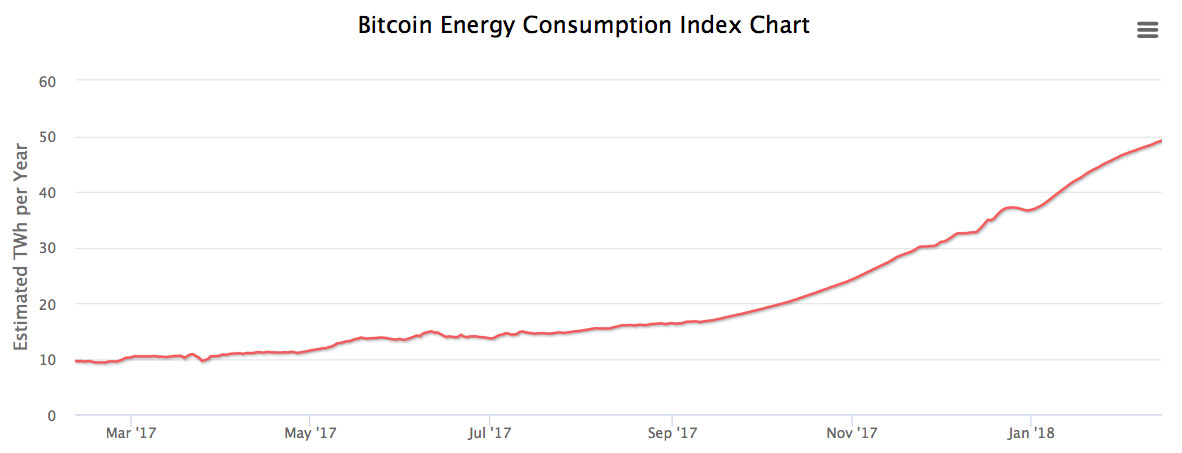So, Bitcoin (BTC) wastes a ton of electricity. A headline that made the world news says that trading a single BTC uses the amount of energy an average home consumes in a month. That piece of information came from a 2017 post from the dutch bank ING’s Head Economist, Teunis Brosens. He based his opinion in a Digiconomist’s Bitcoin Energy Comsumption Index. According to this source, one single BTC transaction uses over 200 kWh, using the total BTC hashrate as input, and assuming most miners use the same kind of machine to do the computation workload. Is this really a lot? For comparison, the author shares his weekly home consumption: 45 kWh. Big deal, apparently. Additionally, he states that a traditional payment network (VISA) uses a very small fraction of that energy (0.01 kWh) per transaction.

However, one detail was not accounted for in this equation: the utility of BTC. Cryptocurrencies like BTC have 3 major characteristics: decentralization, immutability, and transparency. These features are implemented at a low level by the mathematical structure of the blockchain, secured by cryptography, and are summarized by the property of “trustlessness”. I explained what is a blockchain in a previous post. In practice, blockchains are built in computer code stored in a great number of distributed machines (nodes) making them decentralized. The complete blockchain must be stored by each node, and thus is integrally transparent, and can be counterchecked anytime. However, all of these features would be useless if the blockchain could be easily changed or overwritten. Cryptography is used to render it immutable. This is made by virtue of a computational power competition between some of the nodes (mining). Computers use energy in the form of electricity to work and execute the computation necessary to secure the chain. This energy is translated in the form of the useful characteristics of the blockchain, most critically its immutability. In this way, one could argue that we are “transforming” energy in the value stored in the blockchain. We should, then, examine if this price tag is fair or excessive.
Bitcoin was created by an anonimous figure by the name of Satoshi Nakamoto to substitute for fiat currencies in a world where trust in central issuing and management of money is evermore distrusted. People feel that the traditional economic system is ridden with problems and need a reform. Nakamoto’s proposal is BTC. First envisaged as a peer-to-peer trustless payment method, BTC is actually becoming a store of value used as hedge against traditional economy problems, like inflation. Although it is always described with an emphasis in its volatility, it has outperformed traditional store of value assets like gold, and as such has been touted as the “digital gold”. The price tag of BTC right now is around 8k USD, and this refers both to the value stored in it using the energy consumed by the miners, and to the stored value by users. In this respect, BTC produces a high value of “store power” per energy unit.
In July 2017, BTC value was circa 3k and its estimated annual energy consumption was 15 TWh. At this moment, as BTC rovers at 8k, its estimated annual energy consumption is 50 TWh, an increase of 3.3 times the energy comsumption to increase its value by 2.6 times. if this relation mantains roughly linear, in 2023 BTC will consume 1,650 TWh, and have a value of 208k USD! This would make BTC one of the top energy consuming entities of the world! Will this naive prediction hold? Probably not! BTC has cyclic behavior and pass through periods of low value and activity (“bear markets”), and technological inovations in the wake of Moore’s Law are certain to bring more efficient and less energy consuming computational equipment. However, it may be taken as an upper bound to the possible energy-value relation of BTC.
My proposal is that the value locked in BTC is actually this energy, the value of energy used to enforce its immutability, its security (its main utility). In this regard, besides being considered digital gold, BTC could as well be considered stored energy. The other aspect of the energy consumed (“stored”) by BTC is its equivalence in carbon footprint. This is really a problem that must be addressed, but its solution is rather simple. If BTC is stored energy, it carries within it the carbon footprint of the energy that it uses. Utilization of renewable and low carbon energy sources will render BTC as clean and green as it can be.






